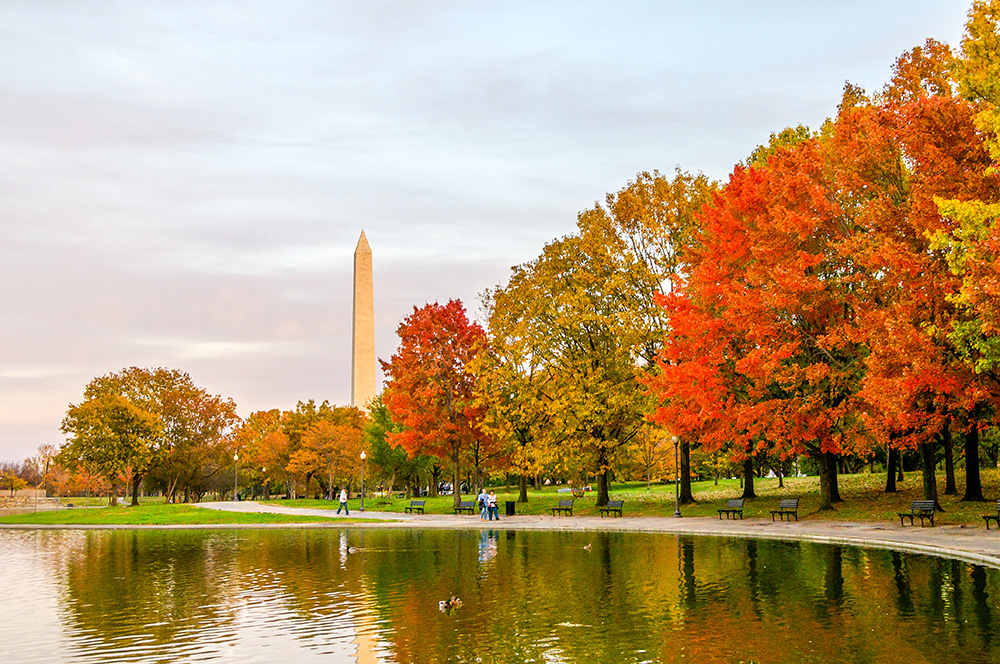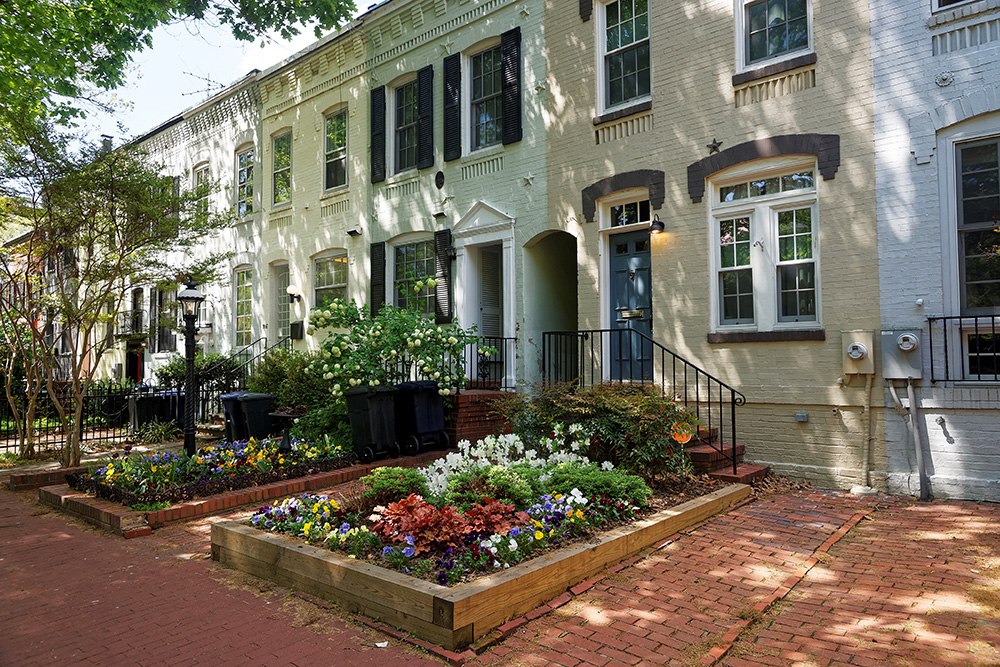
The Washington D.C. Metro area is a hub of activity at all times. With the Capitol at its heart, it is one of the most important political and economic centers in the nation if not in the world. Aside from political offices, the nation’s capital is also known for its museums, monuments and historical markers. The extended Washington Metro area includes the counties of Frederick, Montgomery and Prince George in Maryland and the counties of Fairfax, Arlington and Loudon in Virginia.
Overview of the Economy
Washington D.C. Metro, including the neighboring counties that serve as a commercial and residential extension of the District of Columbia, is widely known as a unique area for doing business, developing a career and putting down roots. Since the economy is largely dependent on government jobs, growth has been flat due to budget limitations and hiring restrictions. Going forward, job growth in the Washington Metro area is estimated to expand by 33.7 percent in the next 10 years, which is higher than the estimated average growth rate of 33.5 percent for the U.S. in the same period.1
The following numbers are worth noting2:
- The average income for workers is $46,502, which is significantly above the national average of $28,555.
- Median household income is estimated at $69,235 a year, which is certainly much higher than the U.S. average of $53,482 annually.
- More than 50 percent of employable residents hold a post-secondary degree, indicating that the workforce is one the most highly educated in the nation.
However, the cost of living in Washington Metro is among the highest in the U.S. For starters, the income tax rate for area residents is 6.5 percent compared to the national average of 4.6 percent. The cost of living index is an indicator of affordability of a city or region, and the national index is set at 100 as a threshold to compare affordability and living standards across different regions. Washington Metro’s cost-of-living index is 173.9. Housing costs represent the biggest chunk of cost-of-living expenses with Washington’s cost of housing indexed at 303.1, which is substantially higher than the threshold.3
Housing Market Review
Housing is often the biggest expense for residents of the Washington D.C. area. In the first quarter of 2019, the median sale price was set at $555,000 or an increase of 8 percent compared to the same period last year. Prices vary widely depending on the neighborhood. For instance, the median price for a house in the Congress Heights neighborhood was $255,000. In comparison, the median sale price for a house in the Spring Valley neighborhood was recorded at $2.4 million. For the D.C. area, there are at least 12 neighborhoods where median home prices are above $1 million.
The following indicators show that the Washington D.C. metro area remains a hot market for real estate investors.3
- Inventory of available homes for sale is 25 percent higher compared to the same period last year. The Washington D.C. area has a housing inventory of 1.71 months.
- The median number of days on the market dropped to 32, indicating a 16 percent drop that favors sellers.
- The number of homes sold in the area dropped to 1,067, which is lower by 8.5 percent compared to the same period last year. The decline may be attributed to tight inventory and rising prices.
Best Neighborhoods for Investing in Washington D.C.
Washington D.C. is defined by the diversity of its residents, and its neighborhoods are reflections of the social, political and economic diversity of the population. Investors have a wide range of choices to consider when deciding where to buy in Washington D.C. and the suburbs that are part of the metro area.
Trinidad
Trinidad is a rapidly changing neighborhood in the northeast quadrant of D.C., and it is close enough to the dining and nightlife cluster on H Street, the Union Market and Gallaudet University with easy access to the Red Line. Classic 1920s rowhouses are in great demand in this area. The median sale price is $517,000 while median home values are recorded at $367,172, reflecting the potential for a significant return on investment.4
This may be one of the hottest neighborhoods for flippers because the flurry of new developments is attracting new residents many of whom are unprepared to undertake property rehab themselves. On the other hand, investors who are prepared to manage Washington D.C. real estate should consider investing in leasable houses to generate income while building equity because property values are expected to continue rising in this area.
Brookland
Brookland is a northeast neighborhood that is also known as “Little Rome” due to a large number of churches, monasteries and chapels within its boundaries. Catholic University has been in this area since 1887. It is a well-preserved older neighborhood with tree-lined avenues, graceful old homes and retro facades on its storefronts. It has become popular due to redevelopment spanning the Brookland Artspace Lofts, the Dance Place and Alice’s Jazz and Cultural Society. This area is easily accessible via the Metro train and bus system.
Fix and flippers have been taking advantage of the changing demographics in Brookland to enhance their real estate portfolio. Real estate inventory consists of rowhouses, bungalows and detached family homes that may need updating. The median home value is $526,524 while the median sale price is $576,861.5 This is a narrow differential for a neighborhood where property values are expected to remain stable. Consider long-term investing in Washington D.C. houses in this area to take advantage of anticipated price growth as the neighborhood continues to draw a new generation of residents.
Buying and holding Washington D.C. real estate is the recommended strategy for this area where property values are expected to grow significantly as jobs growth will trigger population growth. Bolstering this recommendation, price-to-rent ratios are most favorable in Loudoun County. Median home value was $502,000 while media sale price was $512,000.6
How to Invest in Washington D.C. Real Estate
Deciding where to buy in Washington D.C. should not be a stressful undertaking. Auction.com, the leading online real estate marketplace for foreclosure and bank-owned investment properties, provides a seamless process for finding homes to build up your portfolio. Whether you intend to fix and flip or to buy and hold in the Washington D.C. metro area, you can start by browsing the listings at Auction.com.
1,2,3https://www.bestplaces.net/jobs/city/district_of_columbia/Washington
4,5Your Guide To Investing in Washington, Dc Real Estate
Walnut Street Finance Team – https://blog.walnutstreetfinance.com/your-guide-to-investing-in-washington-dc-real-estate
6Should You Invest In Washington Dc Real Estate?
Ingo Winzer – https://www.forbes.com/sites/ingowinzer/2016/05/31/should-you-invest-in-washington-dc-real-estate/#1ffb1ce15fa1


